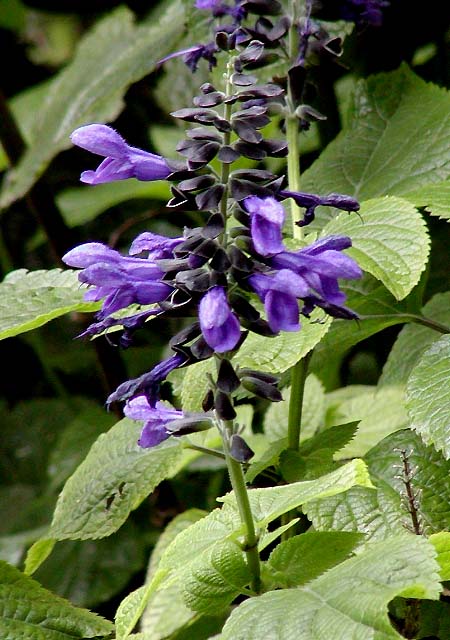 Caffeic acid is phenolic phytochemical belonging to the hydroxycinnamates group. Caffeic acid is a key metabolic intermediate in the synthesis of lignin in plants. As lignin is required by all plants as a structural component, caffeic acid is present to some degree in all plant material. However, some plants bioaccumulate caffeic acid, and therefore higher levels of the compound are found in certain plants. Caffeic acid is main present in plants in its ester form as chlorogenic acid, but lower amounts of the parent compound caffeic acid are found in the human diet. A number of herbs contain reasonable concentrations of caffeic acid include thyme, lemon balm, rosemary, spearmint and sage. Coffee is an important dietary source because coffee consumed in large amounts by some. Caffeic acid, and its derivatives including its ester chlorogenic acid are bioavailable in humans and other animals. Caffeic acid is known to function as an antioxidant in humans, where it may contribute significantly to the antioxidant defences in tissues.
Caffeic acid is phenolic phytochemical belonging to the hydroxycinnamates group. Caffeic acid is a key metabolic intermediate in the synthesis of lignin in plants. As lignin is required by all plants as a structural component, caffeic acid is present to some degree in all plant material. However, some plants bioaccumulate caffeic acid, and therefore higher levels of the compound are found in certain plants. Caffeic acid is main present in plants in its ester form as chlorogenic acid, but lower amounts of the parent compound caffeic acid are found in the human diet. A number of herbs contain reasonable concentrations of caffeic acid include thyme, lemon balm, rosemary, spearmint and sage. Coffee is an important dietary source because coffee consumed in large amounts by some. Caffeic acid, and its derivatives including its ester chlorogenic acid are bioavailable in humans and other animals. Caffeic acid is known to function as an antioxidant in humans, where it may contribute significantly to the antioxidant defences in tissues.

Another way that caffeic acid could improve mood is through regulation of the brain-derived neurotrophic factor (BDNF). When animals and humans are exposed to stress, brain levels of BDNF fall. This decrease in the levels of BDNF is a biomarker for depression and anxiety and many antidepressant drugs may work through elevations in levels of BDNF. Caffeic acid has been shown to elevate depressed levels of BDNF in mice exposed to experimental stress, suggesting that the mood elevating effects of the compound may occur through similar mechanisms to antidepressant drugs. The regulation of BDNF by caffeic acid may occur through a downregulation of the lipoxygenase enzyme. This enzyme is part of the eicosanoid system of metabolising enzymes, and it can synthesise pro-inflammatory leukotrienes that may cause oxidative stress and inflammation in tissues. One of the effects of high levels of leukotrienes may be the downregulation of BDNF. Image is Salvia guaranitica (anise-scented sage or hummingbird sage) Image from : Stan Shebs [GFDL (http://www.gnu.org/ copyleft/ fdl.html), CC BY-SA 3.0 (https://creativecommons.org/ licenses /by-sa/3.0) or CC BY-SA 2.5 (https://creativecommons.org/ licenses / by-sa/2.5)], via Wikimedia Commons.
Caffeic acid is present in a number of plants that are used medicinally for their mood elevating effects including perilla (Perilla Frutescens), Echinacea purpurea and Echinacea angustifolia. For example, studies show that caffeic acid from the herb perilla can significantly decrease the depression experienced by mice exposed to stress. The same group of researchers also investigated the behavioural effects of caffeic acid and found that the behavioural changes exhibited by mice exposed to stress were reversed if the mice were administered caffeic acid, confirming that caffeic acid may have mood elevating effects. The neuropharmacological effects of caffeic acid have been shown to involve the inhibition of damaging hydrogen peroxide-induced oxidative damage in the the brains of rats. Rats exposed to stress exhibited significant improvements in mood from the caffeic acid.
A caffeic acid metabolite extracted from Salvia guaranitica (anise-scented sage or hummingbird sage) has been shown to bind to the benzodiazepine receptor. This suggests that the mood elevating effects of caffeic acid may relate to activation of the GABA system, and the induction of a calming effect through the raising of brain levels of GABA. Evidence for this was provided when researchers demonstrated that similar Salvia guaranitica extracts also produced sedative and hypnotic effects, the types of physiological effects that would be expected from activation of the GABA system. However, some evidence also suggests that caffeic acid may bind to the α1A-adrenoceptor. For example, in one study, administration of caffeic acid significantly reduce the symptoms of anxiety and depression exhibited by mice exposed to fear stress, and these effects were reversed when the mice were also given a drug to block the α1A-adrenoceptor, suggesting that activation of this receptor may have provided the mood elevating effects.

Caffeic acid is present in coffee in high amounts. Caffeic acid has been shown to protect the mammalian brain from damage from metal toxicity. For example, in one study, administration of caffeic acid to mice, significantly inhibited the damage cause by experimental application of aluminium. This damage was likely caused by increased oxidative stress in the brains of the mice. In particular the caffeic acid protected the mice from memory loss, detrimental behavioural changes, oxidative damage to brain tissue and neuronal damage. Therefore caffeic acid may also have a general effect at preventing neuronal damage and dysfunction induced by oxidative stress from aluminium poisoning.
Caffeic acid may also improve memory and this may occur through interaction with the acetylcholine system. For example, rats administered caffeic acid had modified levels of acetylcholinesterase in parts of their brains, In some regions the acetylcholinesterase activity increased, in other areas it decreased. As acetylcholinesterase is responsible for the breakdown of the neurotransmitter acetylcholine, this suggests that caffeic acid may modify levels of acetylcholine differently in various parts of the brain. As acetylcholine is involved in the function of memory, this may explain the memory enhancing effects of the phytochemical. Caffeic acid has also been shown to prevent the chronic fatigue that can develop in experimental animals exposed to high levels of chronic stress such as forced physical activity Caffeic acid can also reverse the anxiety such animals develop as a result of the stress. Caffeic acid may therefore possess a number of neurochemical effects that cause elevations in cognitive function.
RdB
Eat Well, Stay Healthy, Protect Yourself
